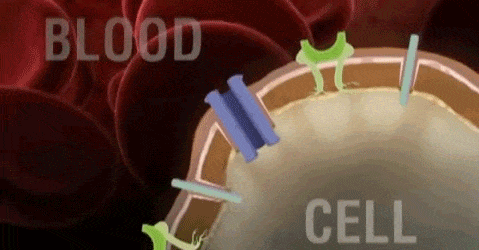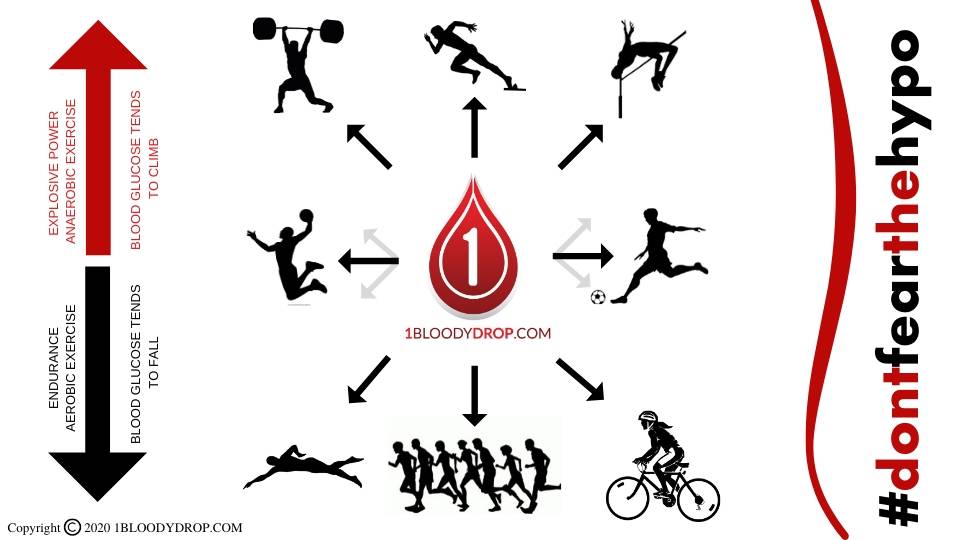Type 1 diabetes
Type 1 diabetes is a condition where the immune system mistakenly decides that a small group of cells inside the pancreas are mounting an attack on the body, and it responds by destroying these cells. There are two problems here; the first is one of mistaken identity and the second is that these cells (the islets of Langerhans beta cells) produce insulin. Insulin is an essential hormone; when we are unable to produce enough insulin we can not maintain normal metabolism (body function). The symptoms of type 1 diabetes typically appear when the population of functioning beta cells drops below approx. 30% of normal.
To help in the explanation of what type 1 diabetes is, and how it differs from other types of diabetes, it is worth starting at the beginning and, as with many things in health and medicine, the best question to start with is how does the system function without diabetes;
it's all about Insulin and the cells that produce insulin
In people who don’t have diabetes some special cells (the islets of Langerhans beta cells) in an organ called the pancreas continuously produce a hormone called insulin.
Insulin production increases when food is eaten.
When we eat food we turn the sugars and carbohydrates into an energy called glucose.
The glucose travels in the blood and is used to provide fuel for almost all of the cells in the body.
Insulin binds with an insulin receptor on the cell surface (membrane) and this opens some special channels in the cell membrane that allow glucose to move from outside of the cell to the inside.
If the cells are already full of energy, insulin converts the glucose into other forms of energy for storage (glycogen and fatty acids) that we can use later.

In people that have type 1 diabetes the special cells that make insulin are destroyed by the immune system and this means that the glucose levels build up in the blood, because there is not enough insulin to transport the glucose (energy) to the inside of the cell.
People with type 1 diabetes must replace their insulin, this is done by multiple daily injections of insulin or an insulin pump. Learn more about Insulin here.
we do not know
Why this happens in some people and not others.
How to prevent it.
we do know
Type 1 diabetes is different from type 2 diabetes.
Type 1 diabetes is not related to lifestyle or weight.
Can happen to anybody at anytime.
the symptoms of type 1 diabetes
Chris Askew the CEO of Diabetes UK tells us the signs and symptoms to watch out for that suggest that you, or your loved one, should ask your health care professional to test for type 1 diabetes.
If you see these symptoms in yourself, or somebody you know or love, then get tested for diabetes, the sooner the better; you may not have time to wait.
Tired
Feeling more tired than normal.
thirsty
Drinking more frequently
Thinner
Weight loss - maybe without even trying, could be very sudden.
Toilet
Needing to urinate often
Diabetic Ketoacidosis
If high blood glucose levels are not treated with appropriate levels of insulin then ketones are produced. They build up in the body and they make the blood more acidic, left untreated these lead to a dangerous condition called Diabetic Ketoacidosis (DKA). Symptoms of DKA can include:
> Feeling tired.
> Drinking a lot.
> Passing urine frequently.
> Abdominal pain.
> High levels of ketones (a special test measures this & people with type 1 diabetes should have the equipment to do these tests at home).
>It is essential to treat Diabetic Ketoacidosis (DKA) quickly, and to seek medical advice, to prevent it from becoming Severe Diabetic Ketoacidosis.
Severe Diabetic ketoacidosis
If Diabetic Ketoacidosis is not treated quickly it will bcome severe Diabetic Ketoacidosis. The symptoms include:
> Feeling tired.
> Drinking a lot.
> Passing urine frequently.
> Abdominal pain.
> High levels of ketones (a special test measures this & people with type 1 diabetes should have the equipment to do these tests at home).
> Deep heavy breathing.
> Vomiting.
> Severe Diabetic Ketoacidosis (DKA) is a life threatening medical emergency.
the gooD news...
There is no doubt that type 1 diabetes is a challenging condition to live with. It is very complex and there is a lot to learn.
The good news is that most people with type 1 diabetes live full and active lives; with advances in insulin, technologies and understanding of diabetes the chances of this are greatly increased.
Personally, I know of people with type 1 diabetes that have climbed to the summit of Kilimanjaro, I am fortunate enough to be one of them. I know people that have run 40 half marathons in a single year; one being my running coach, the other three, including myself, all have type 1 diabetes.
You don’t have to climb mountains or run half marathons but staying fit and active seems to help with managing the psychological and physical aspects of living with type 1 diabetes. Some evidence even shows that the honeymoon period can be significantly extended in those that participate in regular physical activity. This is important and some researchers think that extending the honeymoon period reduces the risk of developing long term complications of diabetes. Perhaps, even more importantly, regular physical activity helps us to maintain healthy weight, lowers lipid levels and reduces blood pressure and this also reduces the risks of developing the complications of diabetes.
The challenge is that performing exercise with type 1 diabetes requires additional planning; this assumes that you have the knowledge and tools to adapt your diabetes management to prevent low blood glucose levels during exercise with type 1 diabetes. 1bloodydrop is here to help you develop the tools and knowledge you need to help you on your journey with type 1 diabetes and exercise.
Click here for a message of hope and encouragement.
topics that Might Also Help you...
Your diabetes may vary and that is OK – With Dr Alistair Lumb
Managing my blood glucose levels during exercise – Pocket Medic
